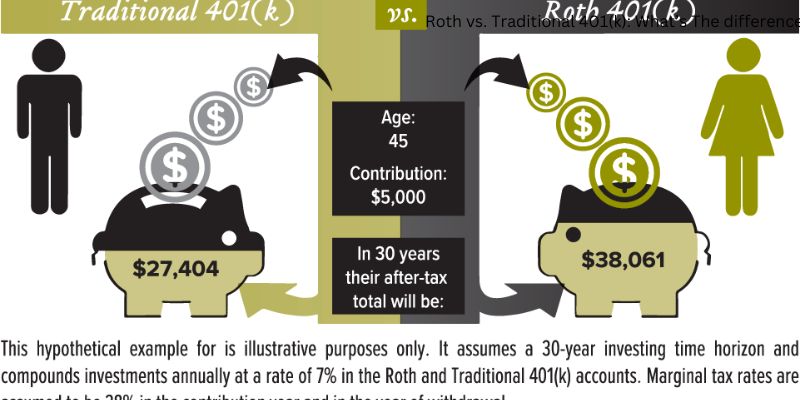Understanding the Basics: What is Demand?
Dec 09, 2023 By Triston Martin
In the realm of economics, demand is a fundamental concept that describes consumers' willingness and ability to purchase a product or service at different price levels. It is an essential driving force behind economic activity, influencing the price of goods or services in the marketplace. Demand is not static but fluctuates based on several factors, including changes in income, preferences, and the prices of related goods or services. Understanding the dynamics of demand is crucial for businesses to anticipate consumer behavior, strategize pricing, and optimize profits. This discussion aims to shed light on the nuances of demand, providing a comprehensive overview of its determinants, characteristics, and role in the economic landscape.
Definition of Demand

Demand is the quantity of a good or service that consumers are willing and able to buy at a given price and time. It represents the inverse relationship between price and quantity, where an increase in price leads to a decrease in demand, and vice versa. This inverse relationship is depicted by the demand curve, which slopes downward from left to right.
The law of demand states that all else being equal, as the price of a product increases, the quantity demanded decreases. This is because consumers tend to substitute more expensive items with cheaper alternatives or reduce their total purchases at higher prices. However, this relationship is not linear but rather follows a negative exponential curve due to diminishing marginal utility – the satisfaction derived from consuming an additional unit of a good decreases as more units are consumed.
Demand vs. Quantity Demanded
It is essential to distinguish between demand and quantity demanded, as these terms are often used interchangeably but have different meanings. Demand refers to the overall desire for a product or service, while quantity demanded represents the specific amount that consumers are willing and able to buy at a given price. In other words, demand is a concept that encompasses all potential levels of consumption at various prices, while quantity demanded refers to a specific point on the demand curve.
Law of demand and why it matters.
The law of demand is a fundamental principle in economics and has significant implications for businesses, consumers, and the economy as a whole. Understanding this law is crucial because it helps explain consumer behavior and guides business decisions.
For businesses, the law of demand provides valuable insights into how changes in price can impact their sales and profits. By understanding the inverse relationship between price and quantity demanded, businesses can strategically set prices to maximize their revenue and profits. They can also use this knowledge to anticipate changes in consumer behavior and adjust their marketing and sales strategies accordingly.
Factors Influencing Demand
Several factors influence demand, and understanding them can help businesses anticipate changes in consumer behavior and adjust their strategies accordingly. These factors include:
- Income - As the purchasing power of consumers increases, so does their demand for goods and services.
- Price of related goods or services - The prices of substitute goods (e.g., Coke and Pepsi) or complementary goods (e.g., coffee and cream) can affect the demand for a particular product.
- Preferences and tastes - Consumer preferences and changing trends significantly influence demand. For example, as more people adopt a vegan lifestyle, the demand for plant-based products increases.
- Population demographics - Factors such as age, gender, and income levels of a population can have a significant impact on their purchasing behavior and, subsequently, demand.
- Advertising and marketing - Effective advertising and marketing strategies can increase consumer awareness of a product, leading to an increase in demand.
Elasticity of Demand
The concept of elasticity of demand measures how responsive consumers are to changes in price. It is calculated by dividing the percentage change in quantity demanded by the percentage change in price. A high elasticity of demand indicates that consumers are highly responsive to price changes, while a low elasticity of demand shows that consumers are less sensitive to price fluctuations.
Knowledge of the elasticity of demand is essential for businesses in determining the impact of price changes on their revenue and profits. Products with an elastic demand tend to have more competition and thinner profit margins, while those with an inelastic demand can command higher prices and have more significant profit potentials.
Graphic Representation of Demand

The demand curve is a graphical representation of the relationship between price and quantity demanded. It is typically a downward sloping line, with price on the vertical axis and quantity on the horizontal axis. The shape of the demand curve depends on the elasticity of demand for a particular product or service.
Shifts in Demand Curve
Changes in factors such as income, preferences, and population demographics can cause the demand curve to shift. For instance, an increase in income would shift the demand curve for luxury goods to the right, indicating a higher level of demand at every price point.
On the other hand, changes in price would cause movement along the demand curve, as opposed to shifting it. This is because the quantity demanded changes with price, but not necessarily the underlying factors that influence demand.
Conclusion
Demand is a fundamental concept in economics that plays a crucial role in shaping consumer behavior and business decisions. Understanding the determinants and characteristics of demand can help businesses strategize their pricing and optimize their profits. By analyzing the law of demand, factors influencing demand, elasticity of demand, and graphical representation of demand, businesses can gain valuable insights into consumer behavior and make informed decisions to meet market demand effectively. So, it is crucial for businesses and individuals alike to understand the concept of demand and its implications in order to navigate the market successfully. So, let's continue learning about economics and how it impacts our daily lives!
-
 Mortgages Dec 03, 2023
Mortgages Dec 03, 2023When to Refinance Personal Loan
Considering refinancing your loan? This blog post provides an overview of when it makes sense to explore refinancing personal loans and when there may be better ideas. Learn about terms, fees, closing costs, and more before deciding.
-
 Taxes Nov 11, 2023
Taxes Nov 11, 2023What Exactly Is an Income Tax Deduction?
You may be able to lower your tax bill by claiming a tax deduction. In Schedule A of your tax return, you can itemize your deductions or just take the standard deduction, a single deduction of a predetermined dollar amount. Itemize your taxes if your itemized expenses surpass the standard deduction for your filing status.
-
 Taxes Nov 09, 2023
Taxes Nov 09, 2023Roth vs. Traditional 401(k): What’s the difference?
Navigating retirement investments can be confusing - our comprehensive guide compares Roth and Traditional 401(k) to help you make the best choice for your future financial goals.
-
 Mortgages Feb 23, 2024
Mortgages Feb 23, 2024What Is A Car With A Salvage Title, And Should I Buy One?
When looking for a used car, you could come across certain vehicles with titles branded as salvage. Automobiles assigned a salvage title have been deemed a total loss by their insurance providers due to severe damage or theft. Before choosing to purchase a vehicle with a salvage title, it is essential to understand the consequences and possible hazards linked with doing so, despite the fact that these automobiles can have appealing price tags.
